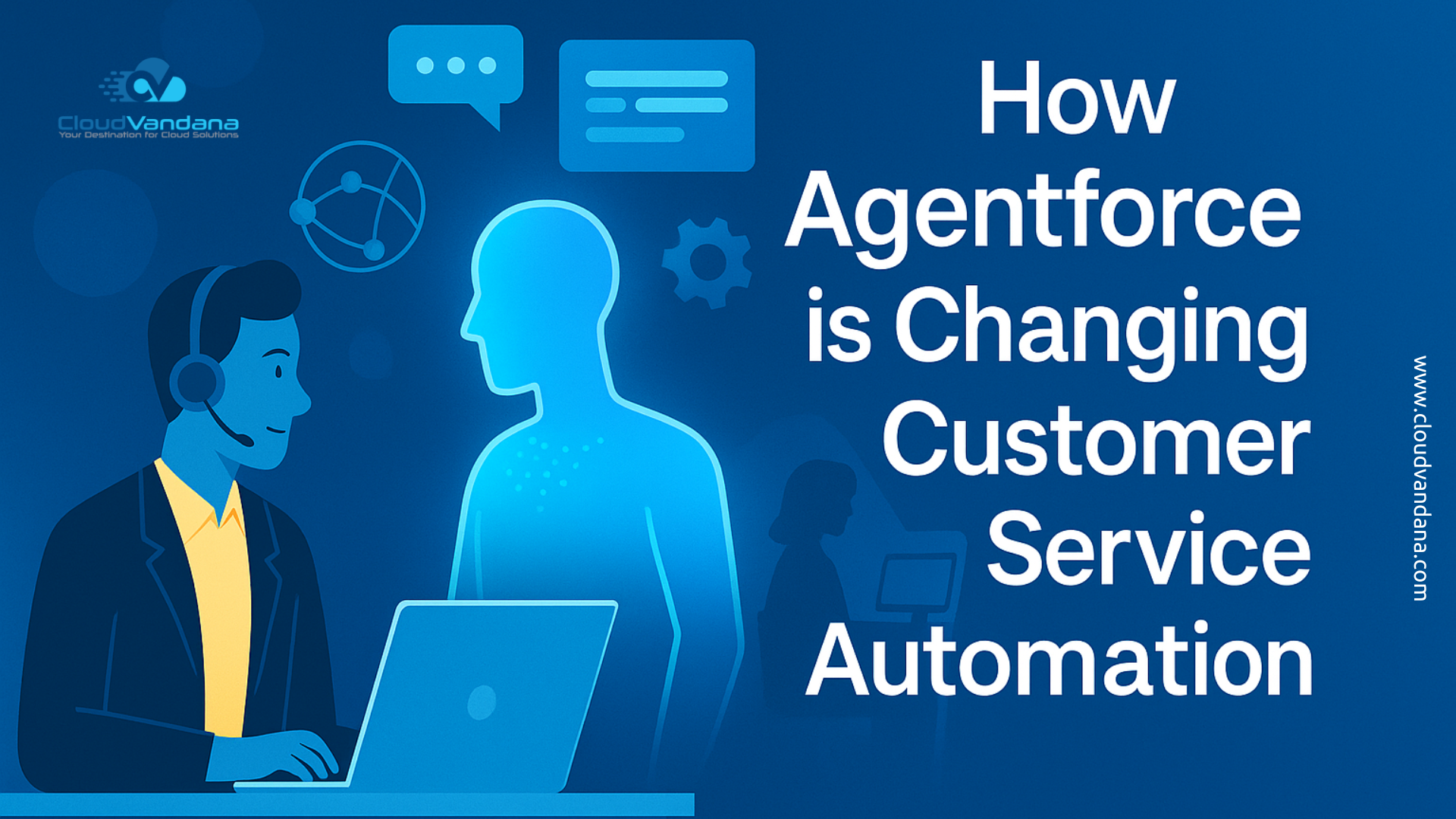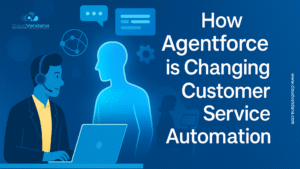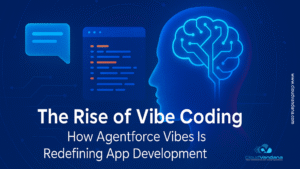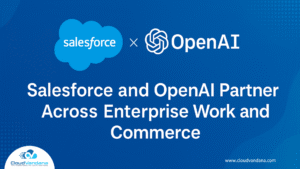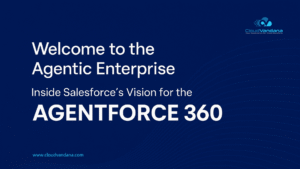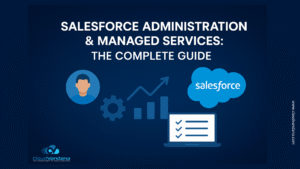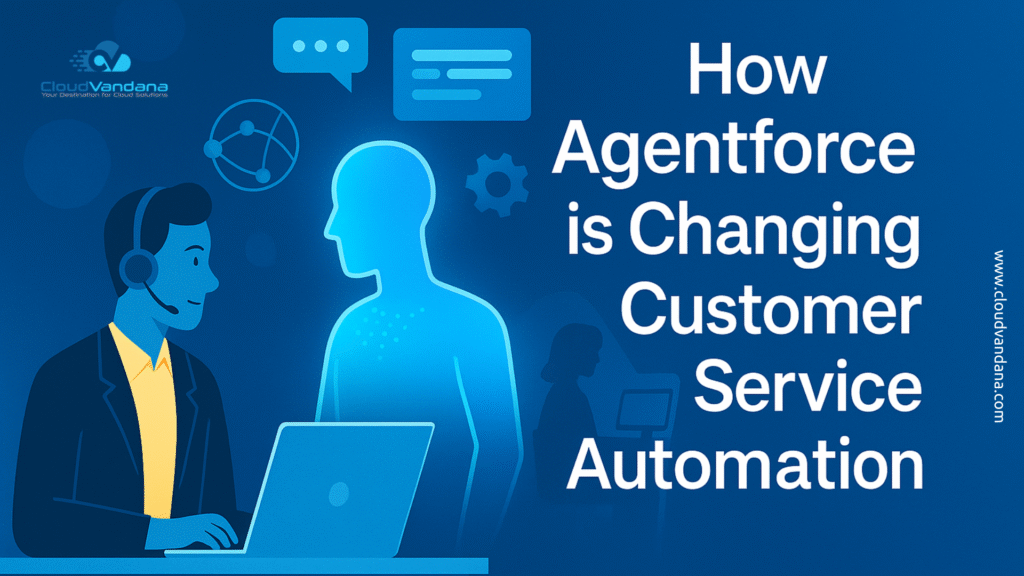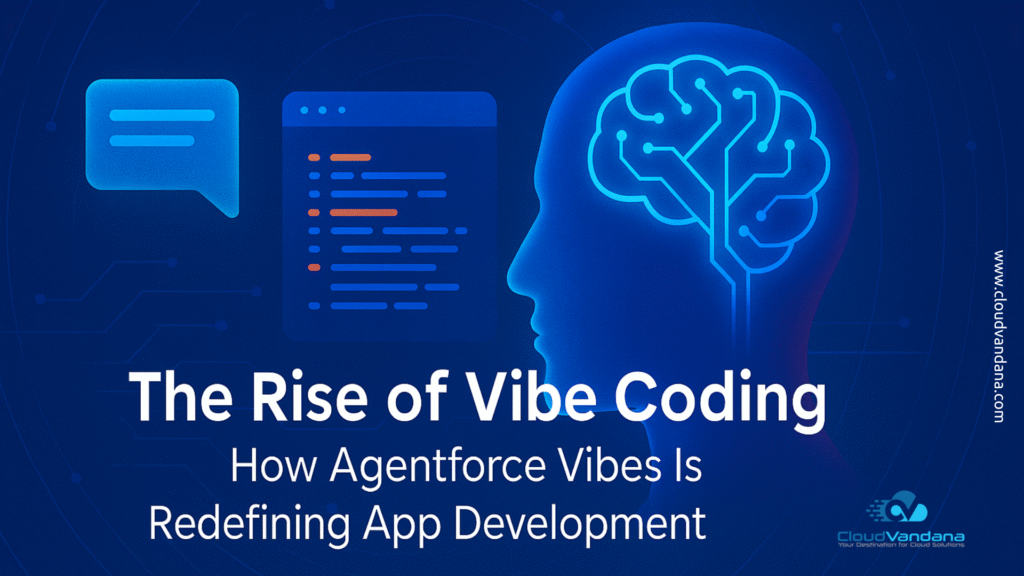In today’s hyper-connected world, customer expectations are shifting rapidly. The baton has passed from mere reactive support to proactive, intelligent engagement. Service organisations are increasingly under pressure to do more — faster, smarter, with fewer resources. Enter the era of autonomous agents. Among the front-runners in this transformation is Agentforce, an AI agent platform designed to radically change how customer service automation is executed. In this article, we explore how Agentforce is rewriting the playbook for service automation, step by step.
Table of Contents
- Understanding Agentforce: What it is and why it matters
- The evolution from chatbots to autonomous agents
- Agentforce’s core architecture: The Atlas Reasoning Engine
- Contextual intelligence: Leveraging 360-degree customer data
- Omnichannel orchestration: Breaking down silos in service
- Automation built for humans: Guardrails and human-in-the‐loop
- Self-service redefined: From FAQs to proactive resolution
- Intelligent case-deflection: How Agentforce reduces workload
- Escalation-aware routing: When human intervention kicks in
- Real-time decision making: Agents that act, not just respond
- Tailored customer journeys: Personalisation at scale
- Efficiency and cost-savings: The quantifiable impact
- Employee experience: Liberating service teams from routine
- Governance and trust: Ensuring safe, compliant automation
- Implementation considerations: Data, strategy and readiness
- Common pitfalls and mitigation strategies
- Future trends: Where autonomous service is headed
- Case study snapshot: Agentforce in action across industries
- Conclusion: Embracing the future of service automation
- Frequently Asked Questions (FAQs)
- YOU MIGHT ALSO LIKE
Understanding Agentforce: What it is and why it matters
Agentforce is not simply another chatbot or AI helper. It is a platform built to create autonomous agents that reason, act, and integrate with enterprise systems. According to its makers, these agents leverage the full breadth of customer data and business logic to handle tasks that go beyond scripted responses.
The significance lies in two bold promises: first, to scale service operations without linear growth in personnel; second, to deliver customer experiences that approach human-level reasoning. For service teams contending with high volumes of inquiries, this shift is far from trivial. The promise is that the digital workforce doesn’t merely respond—it manages, anticipates and resolves.
The evolution from chatbots to autonomous agents
Traditional chatbots have served a useful role in basic customer service scenarios, but they fall short when it comes to intricate, multi-step processes or context-rich problems. Chatbots typically rely on decision trees, scripted flows, and predictable intent classifications. Their limitation: rigidity.
In contrast, Agentforce represents the next step in automation evolution: the autonomous agent. These agents can make decisions, execute workflows, interface with backend systems, and learn from outcomes. This shift from reactive scripts to proactive agents marks a paradigm change in service automation. For example, instead of simply answering “What is my order status?”, an autonomous agent can interpret the entire customer context, act on the customer’s behalf (such as rescheduling a delivery or updating a subscription) and then follow-through to complete resolution.
Agentforce’s core architecture: The Atlas Reasoning Engine
At the heart of Agentforce lies a powerful core architecture. A key component is described as the “Atlas Reasoning Engine”. This engine breaks down user requests into smaller tasks, reasons through each step, and orchestrates actions across systems.
The orchestration is critical: where older automation platforms might stop at recognising a request and giving a recommendation, Agentforce goes further—it chooses an action, executes it (for instance via an API, workflow or prompt), assesses the outcome and then iterates as needed. In effect, it becomes a digital labourer that doesn’t wait for human intervention at every turn. The architecture supports branching logic, context-tracking and dynamically adjusting the plan of action.
Contextual intelligence: Leveraging 360-degree customer data
One of the key differentiators is the integration with a comprehensive customer view. Agentforce is built into the broader ecosystem (for example, with Salesforce Service Cloud and Customer 360) and is able to access customer records, engagement history, purchase history, service interactions and more.
This “360-degree” intelligence enables the agent to personalise interactions: it knows the customer’s prior issues, channel preferences, product history, even likely next-steps based on data. That allows for responses that aren’t generic—but bespoke—and resolutions that go further than simply “providing information”. The agent can pre-empt needs, suggest solutions before the customer even asks, and shift the service model from reactive to anticipatory.
Omnichannel orchestration: Breaking down silos in service
Customers expect service wherever they are — chat, email, voice, social. And they expect continuity: starting on Chat, moving to Email, then picking up on Phone and not having to repeat themselves. Agentforce facilitates true omnichannel orchestration by recognising context across channels and maintaining continuity.
What makes this significant is not only the variety of channels but the depth of context carried over: the agent remembers that the customer already indicated “delivery problem on last order”, keeps that in mind regardless of the channel, and proceeds accordingly. The silos between channels are broken, giving a smoother experience and reducing friction, which is a major contributor to customer dissatisfaction.
Automation built for humans: Guardrails and human-in-the‐loop
Despite its autonomy, Agentforce is designed with human oversight and safety in mind. Guardrails ensure that agents don’t stray into unsafe territory, and human-in-the-loop mechanisms provide assurance. YouTube
In practice, this means that when an agent encounters a scenario outside its confidence bounds, it escalates to a human or asks for human approval. This blending of automation and human judgement ensures that the organisation maintains control, avoids cascading errors, and can rely on the agent’s outputs. For service leaders, this is critical: you’re not giving up control, you’re augmenting capacity.
Self-service redefined: From FAQs to proactive resolution
Traditional self-service has often meant static knowledge bases, FAQs, generic responses and maybe a chat widget. That’s no longer enough. With Agentforce, self-service is elevated: the agent proactively engages users, surfaces answers based on real-time context, and completes actions on their behalf.
Imagine a scenario where a user logs in to a portal, the agent already knows their unstable subscription status, prompts them with “Would you like to update your plan?” or “I see your delivery is delayed; can I reschedule or offer compensation?” This is far beyond a FAQ list. The transformation is from “pull” (customer finds the answer) to “push” (system anticipates the need) and from “information only” to “resolution agent”.
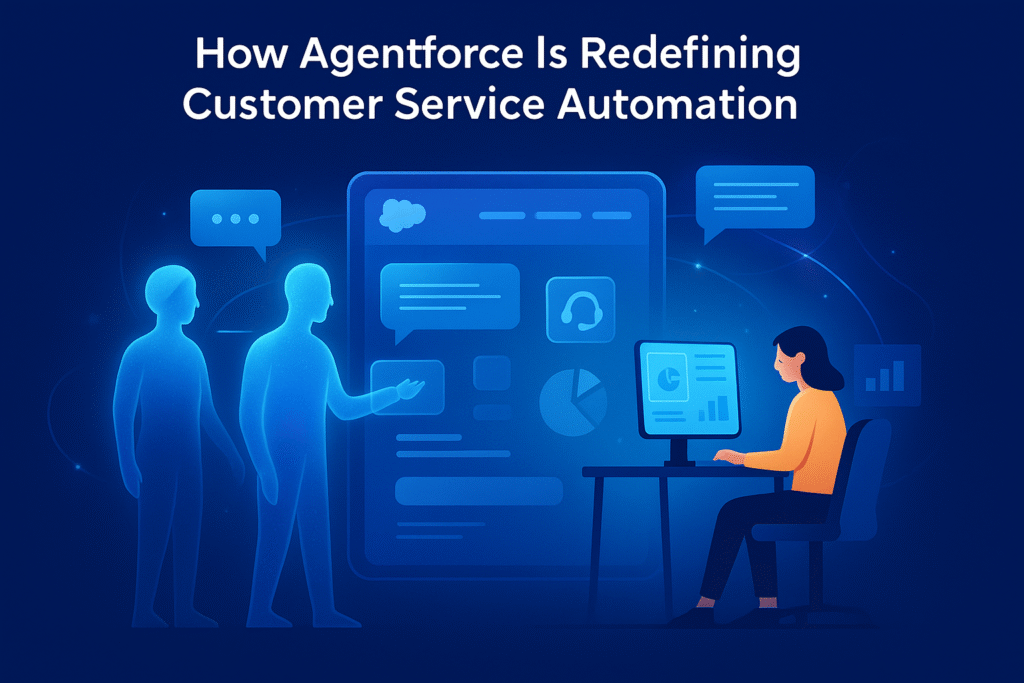
Intelligent case-deflection: How Agentforce reduces workload
One of the most tangible benefits in service operations is case-deflection: the ability to resolve or deflect inquiries before they escalate into full support tickets. Agentforce can handle many of these autonomously—answering queries, triggering workflows, updating records or even engaging proactively with customers.
By doing so, organisations reduce the volume of incoming cases, optimise human agent time for higher-value interactions, and thereby shift from high-cost, reactionary service to lower-cost proactive resolution. The efficiency gains ripple out: lower wait times, fewer hand-offs, higher customer satisfaction.
Escalation-aware routing: When human intervention kicks in
Automation does not mean eliminating humans; it means freeing them for tasks that require judgement and emotional intelligence. Agentforce recognises when a case is beyond its remit and escalates to a human support agent, sending context and history so the hand-over is seamless. Trailhead
This escalation-aware routing ensures no hand-offs are lost or repeated. The human agent inherits full context, reducing duplicate questions and minimising frustration. Instead of starting from scratch, the human can pick up where the automation left off. This hybrid model is central to maintaining high standards of service—and to building trust.
Real-time decision making: Agents that act, not just respond
Unlike passive tools which simply provide a response, Agentforce makes decisions in real time. It can book appointments, update records, trigger workflows, or even generate outreach—all within the customer interaction.
The shift from “responding” to “acting” is profound. It means service teams become proactive rather than solely reactive. For instance, instead of replying “Your order is delayed”, the agent might say “Your order is delayed; I can reschedule delivery for you at no extra charge—would you prefer Monday morning or Tuesday afternoon?” That kind of negotiative, outcome-oriented interaction elevates service from cost centre to strategic asset.
Tailored customer journeys: Personalisation at scale
Personalisation has long been a buzzword, yet often remains under-delivered in large organisations. Agentforce changes that by drawing on rich data and context to tailor each customer’s journey. Rather than one-size-fits-all scripts, customers receive interactions that reflect their history, preferences and current situation.
At scale, this can make a dramatic difference. When customers feel understood and receive interactions that anticipate their needs, loyalty increases, brand affinity strengthens, and operational costs decrease (because fewer retries and escalations). In essence, the agent learns the context of the customer and orchestrates resolution accordingly.
Efficiency and cost-savings: The quantifiable impact
Beyond customer delight, Agentforce delivers measurable business value. According to product literature, having services supported by autonomous agents like those offered by Agentforce leads to improved resolution times, lower human-agent load, and cost efficiencies.
For organisations contending with rising support volumes and resource constraints, these savings are not trivial. Fewer manual tasks, fewer repetitive queries, fewer escalations translate into lower overhead, redeployment of staff to strategic work, and improved profitability. The ROI becomes not just about better customer experience but fundamental business efficiency.
Employee experience: Liberating service teams from routine
Automation also benefits service teams themselves. By offloading repetitive, lower-value tasks to autonomous agents, human agents are free to handle the more complex, interesting, high-touch interactions. This can lead to higher job satisfaction, improved performance and lower turnover.
The human agents shift from “answering tickets all day” to “managing meaningful conversations, escalating complex issues, building relationships”. In an era when talent retention and morale are major challenges in customer service operations, this shift is a major win.
Governance and trust: Ensuring safe, compliant automation
As with any AI-driven system, governance, ethics and compliance are critical. Agentforce includes safety measures, transparent reasoning flows, and auditability built into its architecture.
Organisations must create governance frameworks that define where autonomous agents operate, how they escalate, what data they ingest and how they act. Trust cannot be assumed—it must be designed. Decisions taken by an agent must be traceable; actions must be safe; data privacy must be maintained; regulatory compliance must be upheld. Without these guardrails, the risk of unintended consequences increases significantly.
Implementation considerations: Data, strategy and readiness
Deploying Agentforce effectively requires more than flipping a switch. Organisations must ensure data is clean, integrated, and accessible. Clear strategy, business process alignment and change management are essential. According to implementation guides, organisations must enable the underlying generative AI service, configure topics and actions, and ground agents in trusted data.
You also need to evaluate what use-cases are right for autonomous agents. Not every service interaction needs full autonomy. It may be wise to start with high-volume, low-complexity tasks, build confidence, then expand. Change management is crucial—agents change workflows, human roles, escalation logic and governance. Without readiness, the technology may under-deliver or even cause disruption.
Common pitfalls and mitigation strategies
As with any transformation, pitfalls abound: insufficient data maturity, unclear use-cases, lack of human-agent alignment, weak governance. Implementing autonomous agents without a clear plan may lead to cost overruns, poor customer experiences or workforce friction. Mitigation involves starting small, establishing success metrics, iterative rollout, and ensuring transparency in agent actions.
You should emphasise pilot programmes, measure outcomes, collect feedback from customers and human agents, refine the agent’s actions and escalate logic. Ensuring the human agents are onboard, trained and empowered is indispensable. Without their support, the transition can falter.
Future trends: Where autonomous service is headed
Autonomous agents are not static—they’re evolving rapidly. We will see continuous learning loops, multi-agent orchestration (where multiple digital agents collaborate), deeper emotional intelligence (agents that detect sentiment and adjust tone), and expansion into new functions beyond service. The ambient service model—where customers are assisted before they ask—is becoming plausible. Agentforce is positioned at the vanguard of this shift.
In addition, convergence with analytics, workflow automation, and even physical world actions (appointments, field service coordination, IoT triggers) means the autonomous agent’s role could become central rather than adjunct. The journey ahead is as much about business model transformation as it is about technology.
Case study snapshot: Agentforce in action across industries
We see Agentforce being applied across sectors: from IT service-desk automation, to retail service agents managing returns autonomously, and financial services using it for compliance-aware conversations. Analysts note the platform is being used to deflect support cases, maintain service levels overnight, and reduce human agent load.
In each of these snapshots, the pattern is similar: the autonomous agent handles the routine, the human handles the nuance, the hand-off is seamless, and the organisation benefits from improved efficiency, higher satisfaction and lower cost. The fact that the platform supports a wide array of business roles (service, sales, marketing) means its impact is broad.
Conclusion: Embracing the future of service automation
Adopting AI automation isn’t about technology alone — it’s about integration, governance, and optimization. That’s where CloudVandana comes in.
As a Salesforce Consulting Partner with deep expertise in implementation and automation, CloudVandana helps businesses deploy and optimize platforms like Agentforce, ensuring seamless integration with existing systems, custom flows, and data compliance.
Whether you’re exploring generative AI, migrating workflows to Salesforce Flows, or looking to integrate advanced service automation, CloudVandana can guide your transformation journey end-to-end.
👉 Learn more about Salesforce Services from CloudVandana
Frequently Asked Questions (FAQs)
1. What is Agentforce in Salesforce?
Agentforce is Salesforce’s autonomous agent platform designed to bring generative AI and automation together for customer service, enabling digital agents to reason, act, and resolve issues independently.
2. How is Agentforce different from Einstein or standard chatbots?
While Einstein provides AI assistance and chatbots handle scripted flows, Agentforce introduces autonomous reasoning and multi-system action execution — making it far more powerful and contextually intelligent.
3. Can Agentforce work with non-Salesforce systems?
Yes. Through APIs and connectors, Agentforce can integrate with third-party systems like ERP, payment gateways, and logistics software to perform real-time actions.
4. Is Agentforce secure and compliant?
Absolutely. It operates within Salesforce’s trusted security framework, adhering to enterprise-grade compliance and audit standards, ensuring full transparency and control.
5. What kinds of tasks can Agentforce automate?
From order tracking and refunds to appointment scheduling, onboarding, and case management — Agentforce can automate most structured service workflows.
6. Do human agents still play a role with Agentforce?
Yes. Agentforce uses a human-in-the-loop approach, escalating complex cases and maintaining oversight for sensitive decisions or unclear intents.
7. How can businesses measure ROI from Agentforce?
Metrics include reduced average handling time (AHT), improved first contact resolution (FCR), decreased ticket volume, and enhanced customer satisfaction scores (CSAT).
8. How long does it take to implement Agentforce?
Implementation timelines vary based on data readiness and integration complexity, but most organizations can launch pilot programs within weeks with proper planning.
9. Does Agentforce support multiple languages?
Yes. Its underlying generative models can understand and respond in multiple languages, enabling global service operations.
10. What industries benefit most from Agentforce?
Industries with high service volumes such as retail, telecom, banking, and logistics benefit significantly from autonomous service capabilities.
11. How does Agentforce ensure data privacy?
All customer interactions and data remain within Salesforce’s secure environment, following encryption and access-control protocols that meet global privacy regulations.
12. How can CloudVandana help in Agentforce deployment?
CloudVandana assists with strategic planning, technical setup, workflow integration, and ongoing optimization to ensure Agentforce delivers measurable outcomes aligned with business goals.

Atul Gupta is CloudVandana’s founder and an 8X Salesforce Certified Professional who works with globally situated businesses to create Custom Salesforce Solutions.
Atul Gupta, a dynamic leader, directs CloudVandana’s Implementation Team, Analytics, and IT functions, ensuring seamless operations and innovative solutions.



